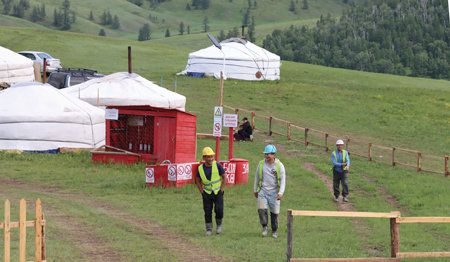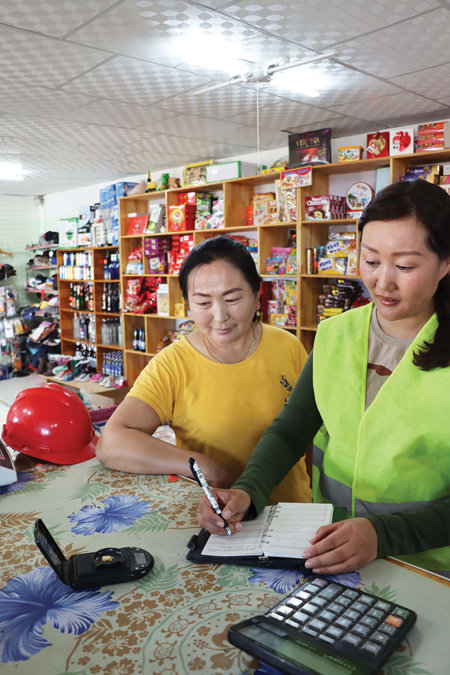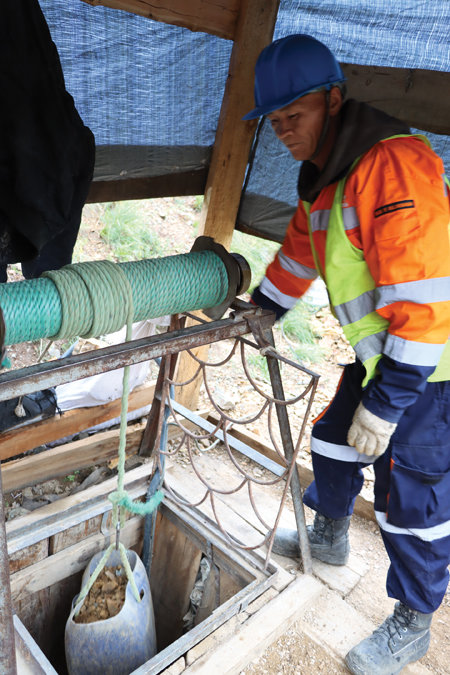
Dulguun Mijiddorj,
Investment Specialist, planetGOLD Mongolia
Artisanal and small-scale gold mining (ASGM) is a significant source of livelihood for millions worldwide. The industry is diverse and can range from individual panners to larger and more mechanized operations. Often an informal business, ASGM is the chief source of income for many rural, low-income communities in the developing world for whom alternative jobs pay less. Globally, the sector accounts for approximately 20% of the gold supply, making it around a USD 35 billion per year industry. Poorly practiced and unsupported by governments, ASGM can be a source of significant negative social and environmental impacts, including the widespread use of mercury, a highly toxic metal. However, when governed well and conducted responsibly and with appropriate environmental safeguards, ASGM can generate significant income and positive social and health benefits for miners and their surrounding communities.
Worldwide, it is estimated that 100 million people already rely on ASGM, either directly or indirectly, for their livelihood. As for Mongolia, an early 2000’s study estimates that 100,000 miners indirectly support more than 400,000 Mongolians through artisanal mining (World Bank, 2007). Of these, and according to a recently conducted nationwide study of 11,962 miners, around 74% are engaged in gold mining with the other 26% working on other minerals like coal or fluorspar (NSO, 2017).
For responsible ASGM to serve as an economic catalyst in these communities, it needs to avoid negative impacts, and to do this the sector requires access to finance that will facilitate the acquisition and adoptions of cleaner and more efficient technologies and sound environmental management practices. This in turn requires an enabling policy environment so that the technologies and practices can be reliably deployed. In the last decades, technology and policy advances have been made within the ASGM sector, yet strong barriers to formal finance remain. Due to its informality and its perception as high-risk, ASGM has had limited access to formal finance, and has traditionally been financed by informal lenders, such as local mining community groups, family members, and gold or mercury traders who offer finance in return for access to future gold production. This informal financing typically supports ASGM technologies and practices that are less costly in the short term, but generally less efficient with greater environmental and health impacts. Better ASGM practices require a level of upfront financing that informal lenders are either unable—or unwilling—to make.
The amount of money required for effective exploration, mining, processing, and rehabilitation activities, which are essential for more sustainable small-scale mining, remain largely out of reach for ASGM. In the worst cases, informal finance arrangements can result in miners being locked into unfavorable agreements, with miners owing significant portions of future gold production to lenders, becoming trapped in perpetual debt cycles, or intertwined with illicit financial flows. Due to the informality of ASGM, environmental, social and governance (ESG) considerations, including mercury reduction or elimination are not usually addressed. It may be difficult for miners to change behaviors around ESG concepts without economic incentives to do so.
While a few ASGM operations have benefited from public donor and grant finance, there is little evidence of finance from commercial lenders or investors, despite the potential for profit from the responsible, efficient production of gold, a highly valuable commodity. While grant and donor funding will likely continue to play an important role in promoting responsible ASGM and demonstrating pilot successes in the near term, the sector is very large, and mining is complex and expensive and therefore the sector needs large amounts of capital in order to transform the sector at scale. Formal private capital is therefore key to establishing a responsible and economically viable ASGM for the vast majority of miners and to allow it to reach its full development potential. Unfortunately, real, and perceived barriers to formal finance remain, including the reputational risk of ASGM; risks associated with environmental, social, and governance impacts; and practical regulatory, operational, and commercial barriers. These must be overcome or mitigated to attract more formal finance to the sector.
Legal and policy environment of ASGM in Mongolia
The Government of Mongolia has taken significant steps to regulate the sector since recognizing it in 2010. Eighteen (18) legislative acts are currently regulating the sector to various degrees. The main administrative legal act regulating the activities of artisanal miners is the Regulation on Extraction of Minerals by Artisanal and Small-Scale Mining (ASM Regulation 151) approved by the Government Resolution #151 on May 24, 2017. The objective of the regulation is to establish procedures for proper extraction of minerals in economically inefficient deposits for industrial mining methods and in waste fields derived from mining and technology, protecting the environment, and reducing poverty through increasing workplaces in local areas.
The Regulation is applicable for all types of minerals extraction by artisanal mining except for water, radioactive element bearing ores, petroleum, natural gas, and commonly spread minerals (i.e., development minerals).
What is “responsible artisanal gold”?
While there are many definitions based on different corporate policies and standards, there are a few key benchmarks. For example, many in the jewelry sector look to guidance or standards issued by the Organization for Economic Cooperation and Development (OECD), London Bullion Market Association (LBMA), and Responsible Jewellery Council (RJC). These frameworks illustrate that “responsibility” requires due diligence to ensure that mineral production and trade does not support armed groups or corrupt practices, and that it takes place in conditions free of forced labor and the worst forms of child labor. Environmental performance expectations vary, but there is often an expectation for progressive improvement toward reduction and responsible use if not elimination of mercury, as laid out in the Minamata Convention on Mercury (NRDC, 2016).
The Government of Mongolia ratified the Minamata Convention on Mercury in 2015 and approved a National Action Plan (NAP) for Reducing Mercury Pollution from Artisanal and Small-scale Gold Mining (ASGM) in Mongolia on the 19th of August 2019.

Formalized miners work in partnerships Tunkhel village, Mandal soum, Selenge province
The NAP proposes 13 strategies around four objectives which aim to eliminate the worst practices in the sector often performed with rudimentary tools and practices, to accelerate ASGM sector formalisation, protect health of artisanal and small-scale miners, particularly women and children and prevent exposure to mercury and increase access to information. The planetGOLD project, by its activities, will significantly contribute to the implementation of the NAP.
What’s the case for investment in artisanal gold?
Artisanal gold exploration and production are seen as “frontier” investments due to the risk profile, location, and often a dearth of information about operations and a dearth of significant case studies. But this is changing. With appropriate due diligence and risk characterization, the artisanal gold sector has a number of unique characteristics that make it attractive for investment:
● Artisanal gold is currently being produced, and investment in artisanal gold production improvements will nearly always result in increased recovery and a higher production of gold. Artisanal miners are present at locations where the presence of gold has already been established – often through their own prospecting. Working with existing production greatly de-risks this aspect of the business.
● There is increasing consumer and corporate demand for responsible artisanal gold—and this demand may be ahead of supply. Consumers seek responsible jewelry and other products, while refiners, manufacturers, and retailers seek corporate social responsibility values, business-to-business (B2B) relationships and customer interest, and/or marketing opportunities.
● Investors who engage early in ASM countries and establish leading relationships will have greater access to investment opportunities in the sector.
● The ASGM sector is being de-risked by international and national policy frameworks, conventions, standards, practices, capacity building initiatives, and other types of public and private engagement.
● Investment in relatively simple technologies can increase recoveries typically by 30% over existing operations, buffering other potential financial risks such as variable world gold price, and also significantly improve environmental performance of the operation.
● Risks associated with social license to operate – an increasing challenge for large-scale mining – can be significantly lower for artisanal mining, as much of the workforce may come from the community or the community can directly partner in the business.
● Investors can generate a clear and measurable social impact because of their investment, along with a quick repayment period typically much shorter than the traditional discovery to production cycle of the formal industry. Capital additions immediately yield production efficiencies as well as improved environmental and social performance, translating into real health, social, and economic benefits for miners, their communities, and their ecosystems – locally and globally. ASM operations have a relatively large workforce compared to industrial mining and therefore enhance community gains from investment.

Local gold trade, Altai soum, Khovd province
About the planetGOLD Mongolia project:
The planetGOLD programme, is funded by the Global Environment Facility (GEF), led by the United Nations Environment Programme, and implemented in partnership with the United Nations Industrial Development Organization, United Nations Development Programme, and Conservation International. The planetGOLD Mongolia project is executed by the Artisanal Gold Council in partnership with the Ministry of Environment and Tourism of Mongolia. The planetGOLD programme seeks to contribute to the elimination of mercury in the artisanal and small-scale gold mining (ASGM) sector through the provision of support for the government to develop and implement policies to enhance formalization of the ASGM sector, facilitate miners’ access to formal gold markets and capital to purchase mercury-free processing equipment as well as to introduce responsible mining, gender and environmental practices in targeted ASGM areas. Artisanal miners will get access to mercury-free processing technologies that are appropriate to the needs and conditions of the target mining sites.

Artisanal and small-scale gold miner operating at the secured shaft, Tunkhel village, Mandal soum, Selenge province
The project aims to implement the following four components until the end of 2023:

At the end, the project is expected to achieve (i) an increased formalization of the ASGM sector, (ii) improved access to responsible gold markets by miners, (iii) reduced mercury releases by the ASGM sector, and (iv) increased information dissemination globally.
The project has chosen two sites with plans to build mercury-free processing systems. For more information about planetGOLD, please access our website here: www.planetgold.org/mongolia
More information on investment in ASGM can be found in “The Issue Brief on Improving Access to Formal Finance in Artisanal and Small-scale Gold Mining”: https://www.planetgold.org/sites/default/files/2020-08/Improving_Access_to_Formal_Finance_in_ASGM-planetGOLD_Issue_Brief.pdf
For further reference: https://www.nrdc.org/sites/default/files/investing-artisanal-gold-summary.pdf